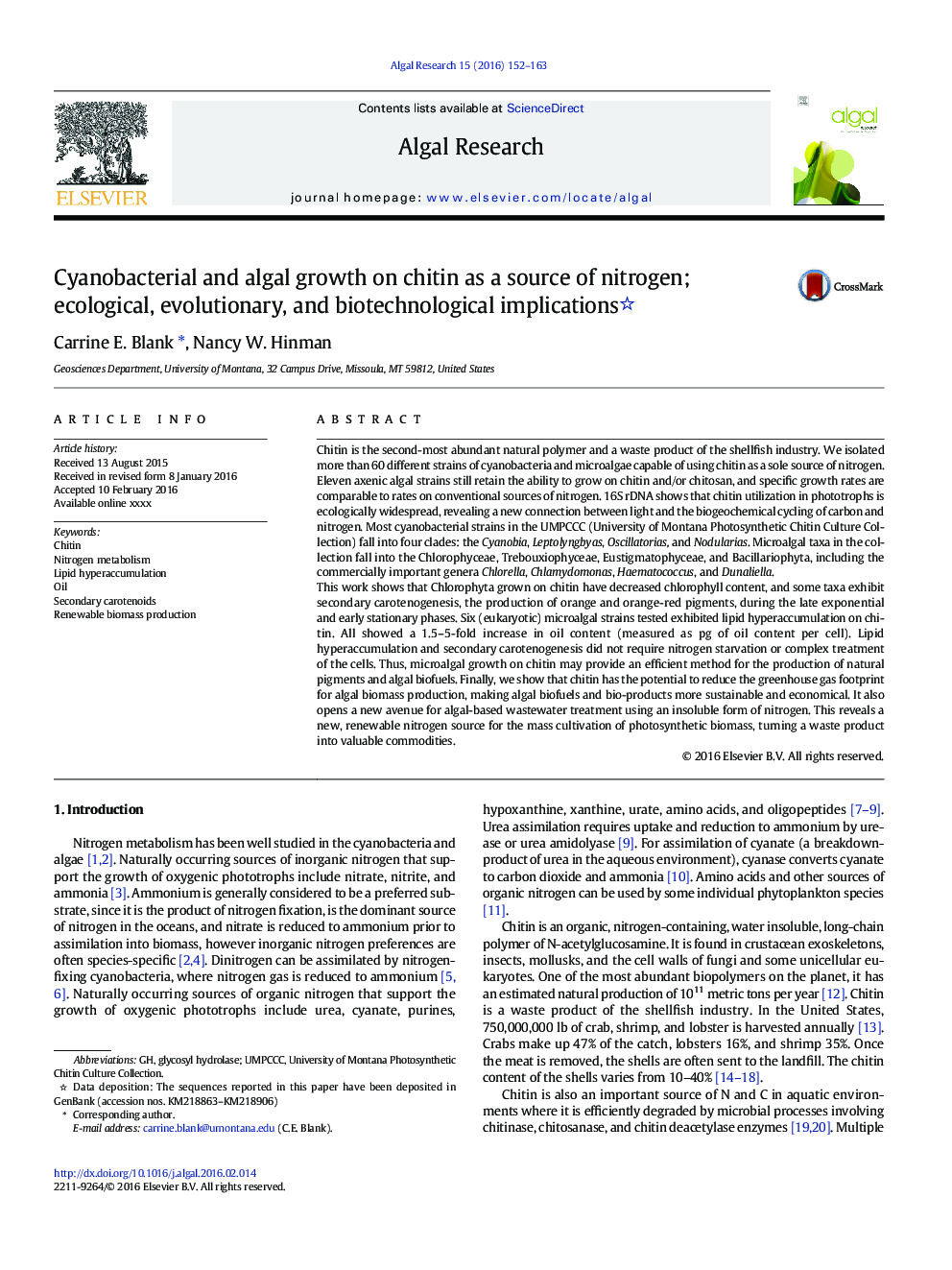| Article ID | Journal | Published Year | Pages | File Type |
|---|---|---|---|---|
| 8087256 | Algal Research | 2016 | 12 Pages |
Abstract
This work shows that Chlorophyta grown on chitin have decreased chlorophyll content, and some taxa exhibit secondary carotenogenesis, the production of orange and orange-red pigments, during the late exponential and early stationary phases. Six (eukaryotic) microalgal strains tested exhibited lipid hyperaccumulation on chitin. All showed a 1.5-5-fold increase in oil content (measured as pg of oil content per cell). Lipid hyperaccumulation and secondary carotenogenesis did not require nitrogen starvation or complex treatment of the cells. Thus, microalgal growth on chitin may provide an efficient method for the production of natural pigments and algal biofuels. Finally, we show that chitin has the potential to reduce the greenhouse gas footprint for algal biomass production, making algal biofuels and bio-products more sustainable and economical. It also opens a new avenue for algal-based wastewater treatment using an insoluble form of nitrogen. This reveals a new, renewable nitrogen source for the mass cultivation of photosynthetic biomass, turning a waste product into valuable commodities.
Related Topics
Physical Sciences and Engineering
Energy
Renewable Energy, Sustainability and the Environment
Authors
Carrine E. Blank, Nancy W. Hinman,
